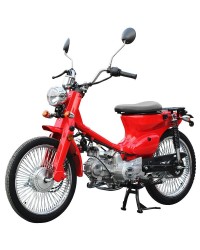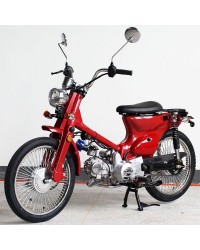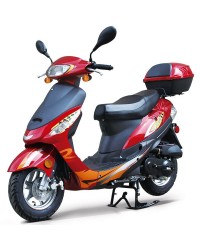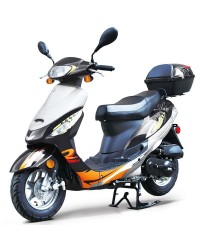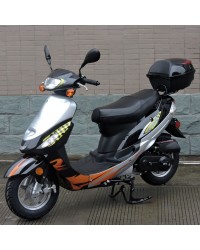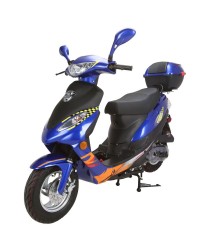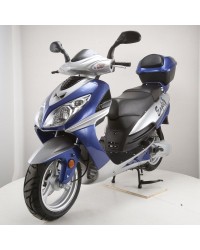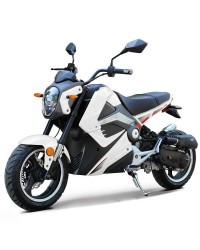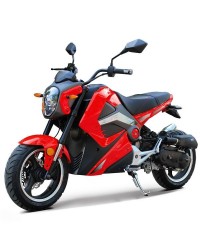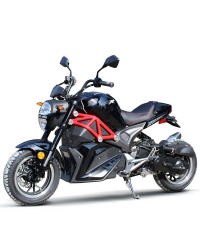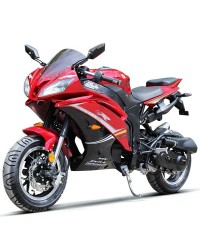We all love riding our scooters in the sunshine and in the cool breezes of spring, summer, and fall. Unfortunately, warm autumn evenings eventually turn into dark, cold, blustery, winter nights that send a biting chill through your face and fingers, even with your riding gear on. The clear, dry roads also change, becoming a muddy, icy, slippery mess that makes riding your scooter a nerve-racking activity rather than a relaxing one. So, we make the difficult choice to put it away for the winter. These are some good reasons to winterize your scooter and a few pointers on how to do it.
It's Best for Your Scooter
Ideally, park your scooter in the garage for the winter months. It needs shelter from the elements, just like you do. A warm, dry storage space is preferable and will help protect and maintain your scooter in top condition. If you don't have a garage, consider a storage unit, warehouse space, or even a carport.
The most important thing is to keep it out of freezing temperatures as much as possible. Also, if you are in a coastal environment, try to get it out of the salt air, which can quickly deteriorate essential parts. Pollution is also not only bad for you, it's bad for your scooter, too. It can be corrosive, so storing it in the countryside is a better option if possible. We recommend using a good scooter cover when storing your scooter for the winter months.
What Happens if You Don't Winterize
Lack of use anytime, but particularly in the winter, can be harmful to your scooter, especially if you don't prepare it to sit unused for a period of time. For example, the battery can slowly drain and become useless, especially if your scooter is kept in cold temperatures. If you keep your scooter outside, moisture can creep into all its vulnerable parts. Gasoline in the tank can also turn into icky sludge over time. In short, your scooter can suffer from neglect, just like any motorized vehicle.
Fill Your Tank
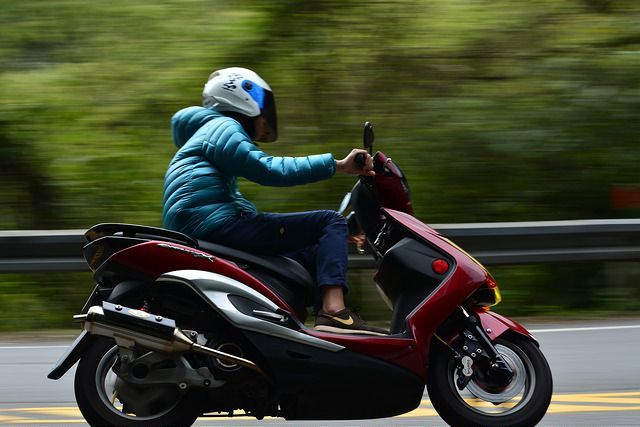
Image via Flickr by xoxoxoo2002
You might think that if your gas can turn to sludge, it would be best to leave your tank empty. That is not the best idea. In fact, you should fill your gas tank for winterization.
Most scooters today have plastic fuel tanks that aren't inclined to rust. However, if your scooter has a metal tank, condensation on the inside can cause it to rust. That's very harmful to your scooter because rust in your fuel tank can cause all sorts of problems. It typically seeps into the fuel system and starts to spread gunk throughout the machine. So, fill your tank nearly to the top, but leave enough room for a little bit of fuel stabilizer.
Add Fuel Stabilizer
Fuel stabilizer is cheap and easy to find at any auto parts store. Follow the manufacturer's recommendation, which is usually to add about a shot glass worth to the fuel in your tank. This will seriously reduce the risk of condensation and rust. Rock your scooter gently from side to side to swirl the fuel in the tank to make sure the fuel stabilizer gets mixed into the gas.
Then, prior to storing it for the winter, ride it for a few miles to allow the stabilizer to work its way through the fuel line and into the carburetor. If the weather is too dangerous to ride it around, run the engine for at least five minutes. Be sure to turn the fuel valve to the off position when you are done.
Protect or Remove the Battery
Batteries are not designed to last forever, but you can extend the lifespan by keeping it from draining during the winter months. If you fail to take care of it, there's a good chance it will be dead when you try to start your scooter in the spring, and no one wants that. Your options are to either remove the battery or put it on a tender. If you prefer, you can take the battery out of your scooter and store it somewhere dry for the winter. A closet, the laundry room, or a heated basement are all fine choices. It may still need to be recharged before you use it again, but it will be a much easier process if it is stored properly and kept out of the cold. The other option is to use a battery tender on your battery while it's still in position on your scooter. This keeps it from draining completely. All you do is plug it into a power outlet. It's pretty simple and prevents a lot of future hassle.
Wash and Dry Your Scooter
Lastly, you should give your scooter a thorough wash before putting it away for the winter. Get out some mild soap, soft brushes, and a drying cloth, and get to work. Give it a good bath from one end to the other. Clean all the chrome, plastic, and metal parts completely to remove the bug splats, dirt, and grime. Those things can corrode over time and harm your scooter. Dry it thoroughly, cover it with a good cover, and say nighty-night. Not being able to ride your scooter through the wintertime can feel like torture. Those wet, icy cold months seem to go on forever. You find yourself starting to count down the days until warmer weather arrives so you can climb back on your scooter and ride once again.
Unfortunately, if you don't winterize your scooter and follow these simple procedures, you'll be greatly disappointed and have to deal with a lot of hassle before you can enjoy your first ride of the season. It's all preventable, with just a little time and effort. Winterizing your scooter is a vital part of being a responsible scooter owner. If you don't winterize it now, you'll have to deal with much bigger problems in the spring, such as a dead battery, gunked up fuel, corroding parts, and a lot of frustration.
Re-post our material is not allowed without permission.
Our Scooter Collection
Scooter blog general
- Scooters
-
50 RTX Scooter Moped with Upgraded Engine, Fully Automatic, Top Speed 45+MPH
Regular Price: $1,799.00
Special Price $1,479.95
+ $379.95 shipping
-
50cc Gas Scooter Moped Red Express with Auto Transmission
Regular Price: $1,099.00
Special Price $729.95
+ $297.95 shipping

-
50cc Gas Scooter Moped Black Express with Auto Transmission
Regular Price: $1,099.00
Special Price $729.95
+ $297.95 shipping

-
50cc Gas Scooter Moped Express with Auto Transmission
Regular Price: $1,099.00
Special Price $669.95
+ $297.95 shipping

-
200cc Gas Moped Scooter Eagle 200cc Automatic CVT Engine, Big Wheel and Body
Regular Price: $2,899.00
Special Price $1,149.95
+ $319.95 shipping

-
50cc Gas Scooter Moped Express Blue with Auto Transmission
Regular Price: $1,099.00
Special Price $729.95
+ $297.95 shipping

-
50cc Gas Motorcycle DF STT with CVT Auto Tranny,Aluminum Wheels
Regular Price: $1,999.95
Special Price $1,499.95
+ $297.95 shipping

-
50cc Gas Motorcycle DF SRT with CVT Auto Tranny, Aluminum Wheels
Regular Price: $1,799.00
Special Price $1,339.95
+ $297.95 shipping

-
50cc Gas Motorcycle DF SST with CVT Auto Tranny, Aluminum Wheels
Regular Price: $2,099.00
Special Price $1,599.95
+ $297.95 shipping

-
50cc Boom Moped Scooter BD50QT-9A with 10’’ Wheels (with black Trunk)
Regular Price: $1,299.00
Special Price $750.00
+ $199.95 shipping























